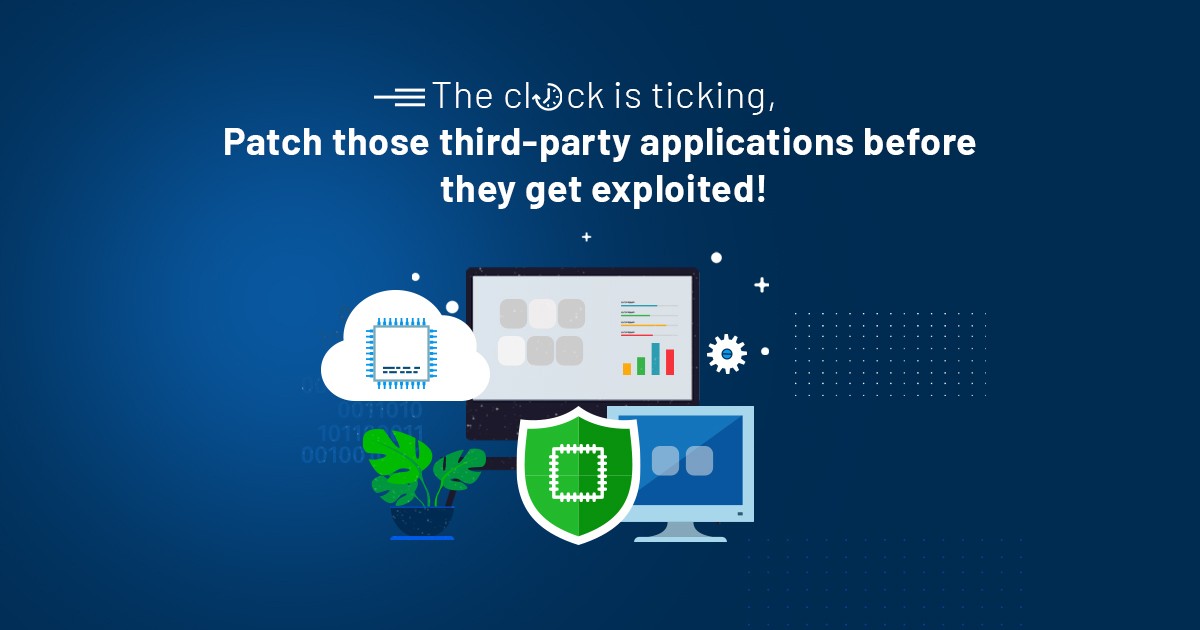You might be well ahead of your peers in keeping your patching cadence for major applications like Microsoft, Linux, or Mac in pace with the latest updates, but can you also perform third-party application patch management at the same pace? If the answer is no, you could open up your enterprise to security compromises that could allow attackers access to your network and result in potential financial and reputation loss. Therefore, a good patch management platform can prevent these issues.
Patching a third-party application offers its own set of unique challenges to the IT Administration teams. While this could be due to the lack of the right security tool or limited visibility owing to siloed views across tools and applications, neglecting third-party patching, whatever the reason, can have a lasting negative impact on your security posture. A patch management tool can resolve these issues. Let’s delve deeper.
Events of third-party application vulnerability exploit
Vulnerable third-party applications could compromise your organization’s security and expose you to business risks.
Here’s a primer on a few recent third-party application vulnerability exploits: –
- Delta Charlie
Delta Charlie, a malware in a botnet form, affected systems with installed Adobe Flash player. The malware was able to self-download, add unwanted binaries, and had the capabilities of changing the configuration settings.
Delta Charlie resulted in a complete network shutdown with a successful Distributed Denial of Service (DDoS) attack. The DDoS attack was due to the exploitation of Adobe Flash Player 18.0.0.324 and 19.x Integration Overflow vulnerability. The team can avoid exploitation by patching and securing third-party applications on time.
- Adobe Flash Player Remote Code Execution
Another vulnerability found in Adobe Flash Player version 28.0.0.137 allowed malicious remote code execution in Mac, Windows, Linux, and Chrome operating systems. This vulnerability was exploited by flash content code embedded in the official document and spread via email. Again, this attack was avoidable by patching it in time. While the list goes on, only a few examples are outlined here in the interest of brevity.
- Magecart
Magecart synonyms group exploited several third-party vulnerabilities in 2019 to steal payment details from over 20,000 online websites. Many organizations like Smith & Wesson were among the top victims.
Failing to patch third-party applications affects your security posture.
Let’s say you install a third-party application like a PDF reader on a device. The IT team may not be aware that such an application is installed in a device unless they have it documented somewhere. When new vulnerabilities are disclosed, this mismanagement could open the gates for attackers to exploit that vulnerability and potentially compromise sensitive business information.
IT teams need to monitor the installed third-party applications for new patches constantly. You should detect and update all existing third-party applications, even if they are not currently used.
Why do you neglect third-party applications patching?
There might be various reasons keeping IT admins from patching the third-party applications in their software inventory. The most common reasons are:
- Falsely assuming third-party applications do not pose equal risks as OS patches
- Keeping track of each vendor-wise updates for multiple third-party applications
- Manual downloads and deployments for each application
- Separate tools and training to patch third-party applications
- Difficulty in assessing the risk levels and prioritizing patches
Any unpatched third-party applications can reward threat actors with an opportunity to breach the security of the organization.
Your network is a complex web with hundreds of third-party applications. Any vulnerable applications that have slipped under your security radar could open up your endpoints to cyber-attack.
SanerNow’s approach to third-party applications patch management
SanerNow Patch Management Software offers end-to-end automated patching for all major OS platforms like Windows, MAC, and Linux. Along with this, it provides an extensive third-party patch repository of 300+ apps to simplify the patching of third-party applications.
In-built and up-to-date third-party repository
SecPod’s security research team continuously checks for new third-party vendor updates, tests the available patches, and adds those patches to SanerNow’s patch repository within 24-48 hours.
Simple and effective automation
SanerNow’s centralized console saves much time and effort spent manually patching third-party applications. Therefore, It automates the end-to-end patching process from scanning missing patches, prioritizing them based on their severity, and downloading updates from vendor sites to deployment on client computers.
Sign-up for a free personalized demo with us. You’ll get to know the piece of your patch management puzzle that’s been missing all along.

